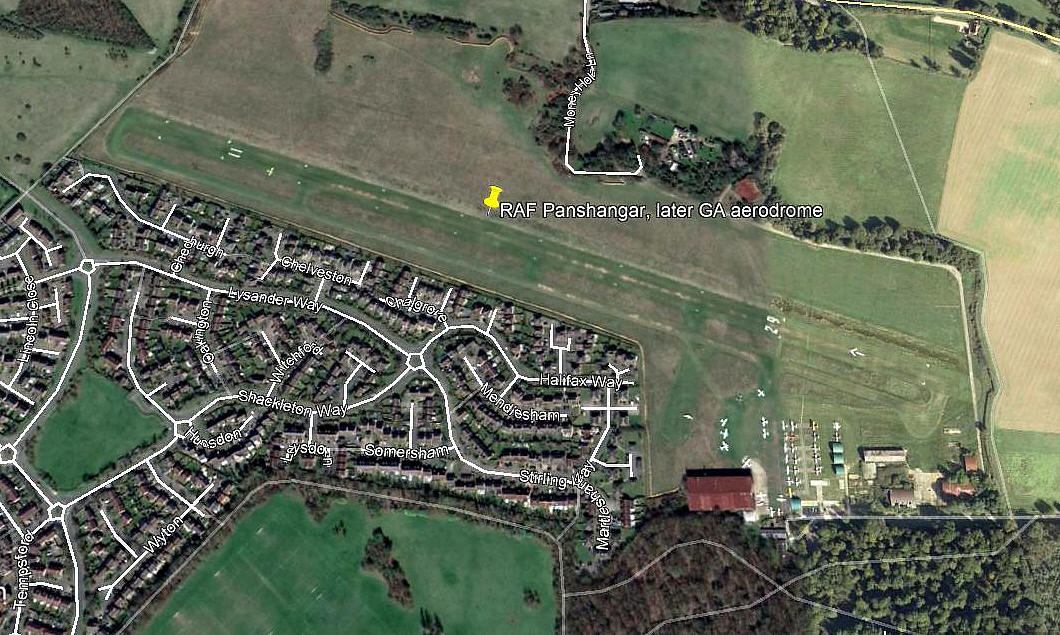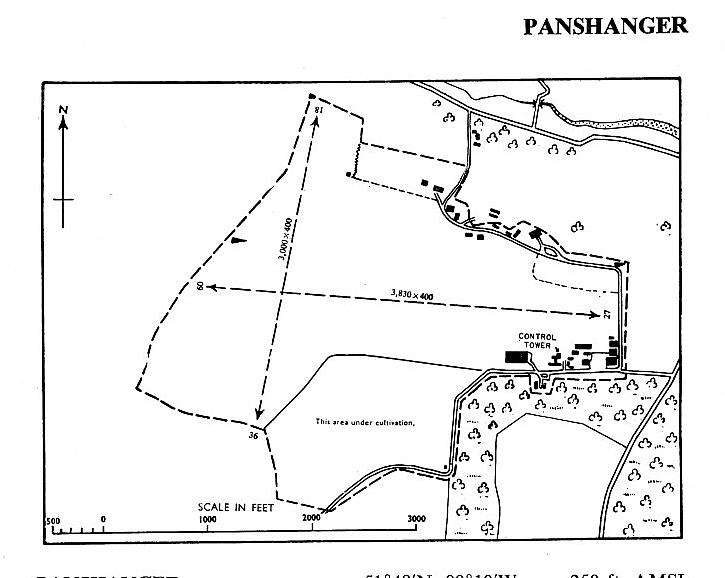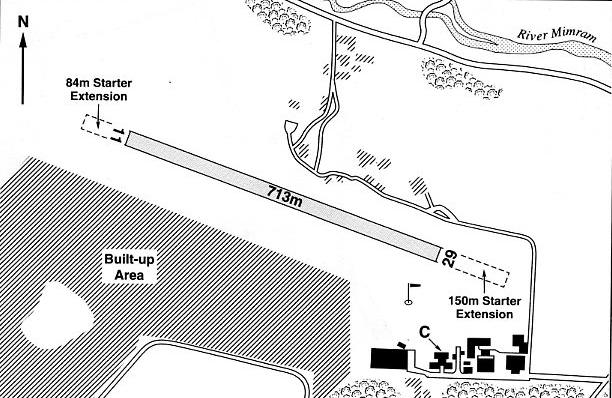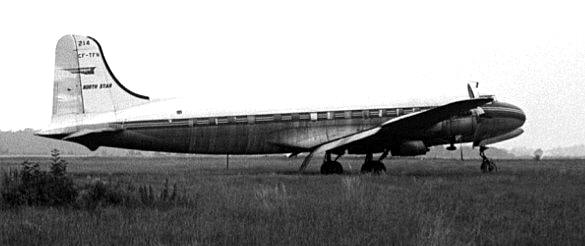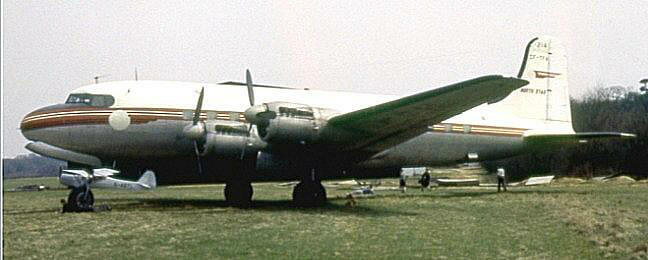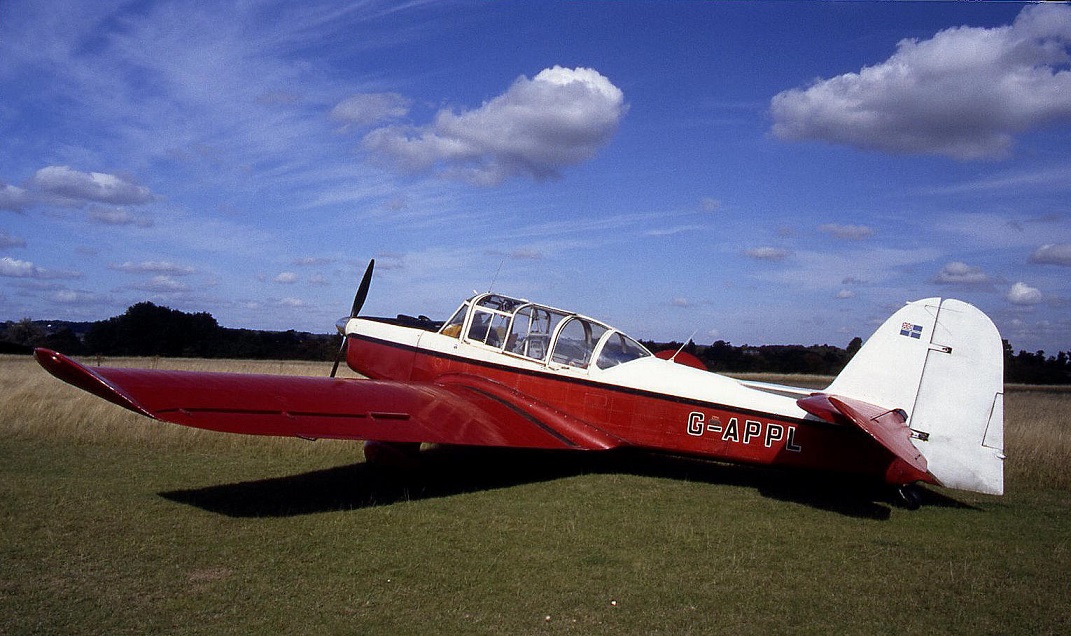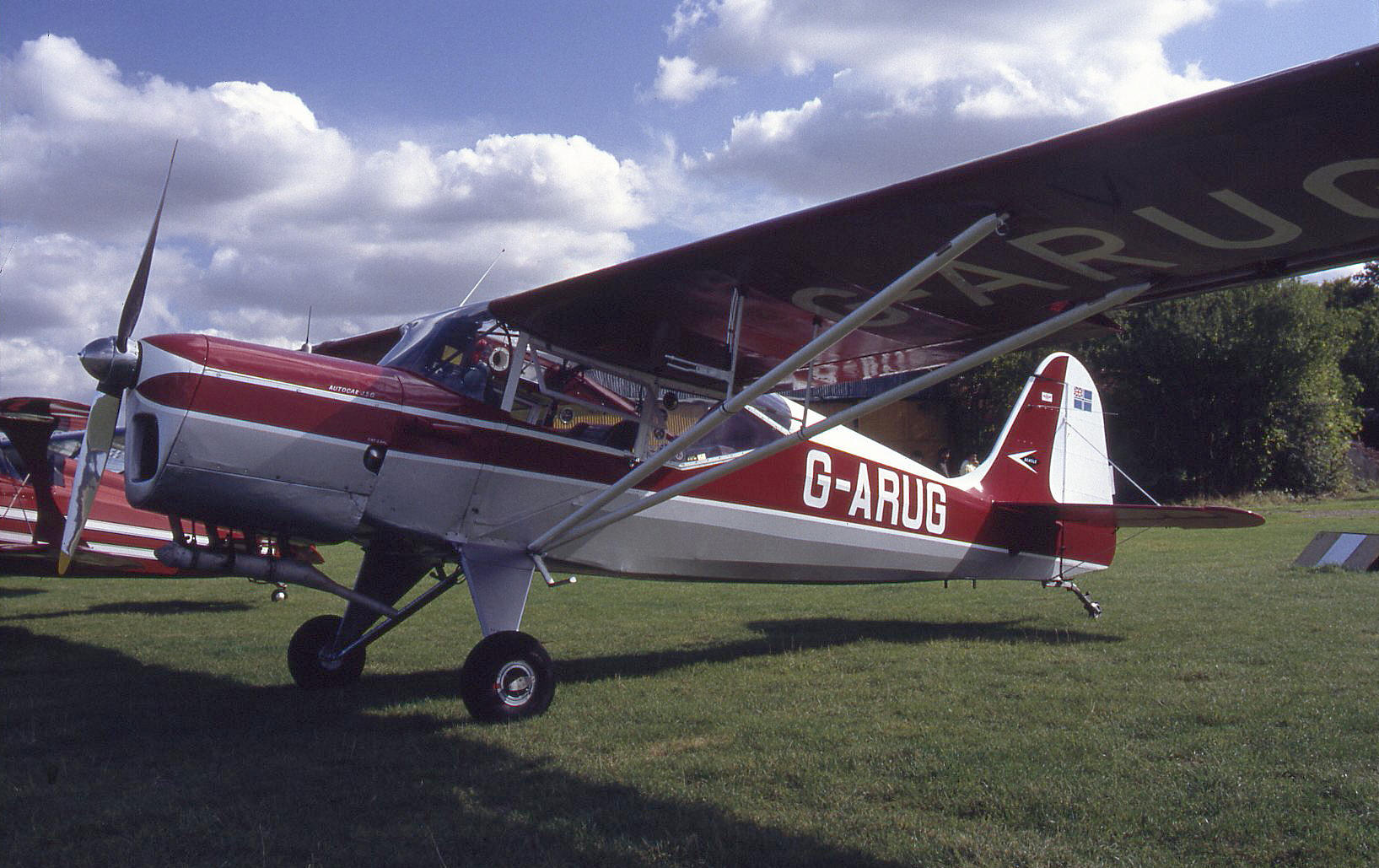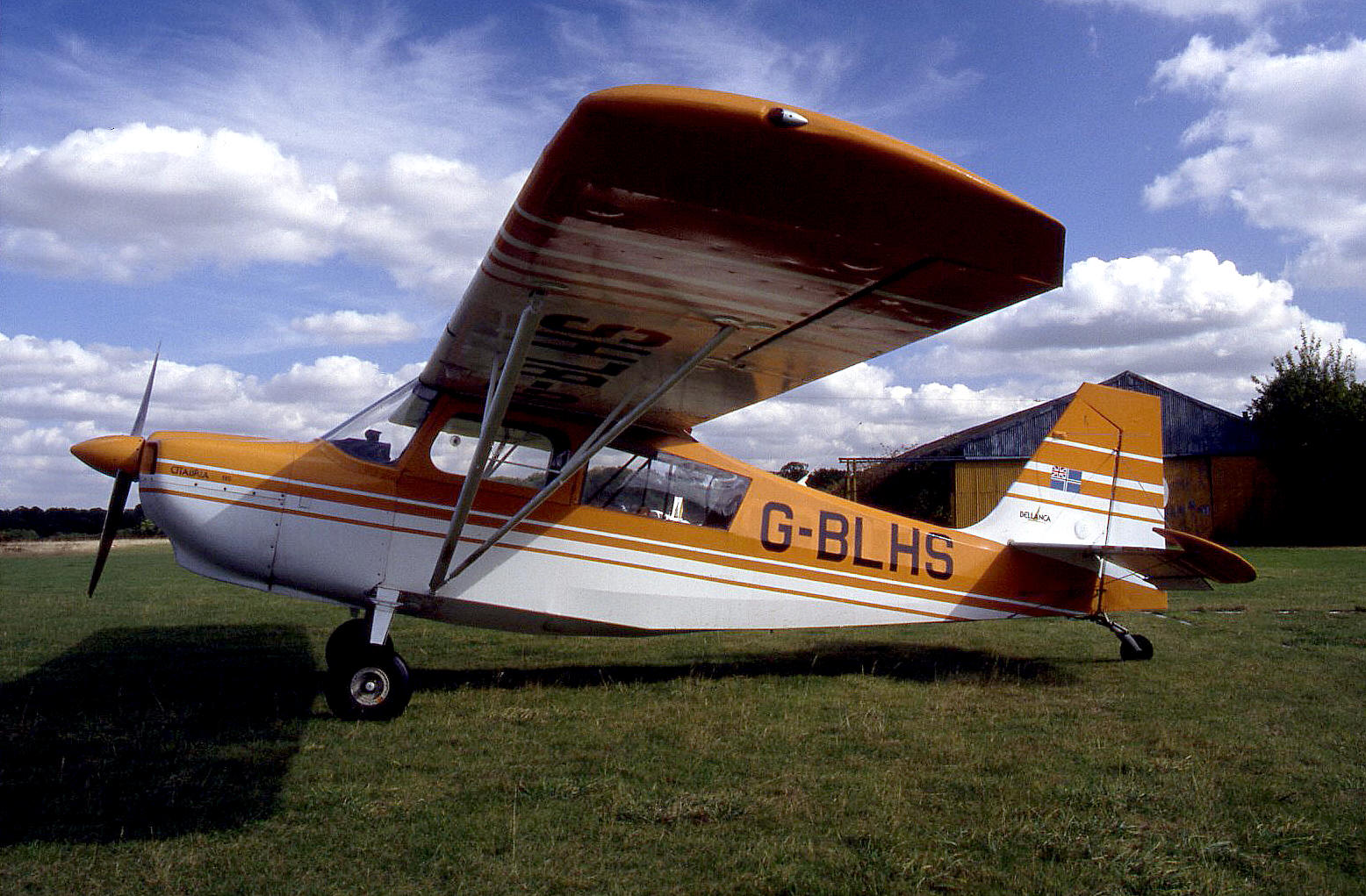Panshanger
PANSHANGER: Military aerodrome later civil aerodrome (Aka HOLWELL HYDE RLG in WW2)
Note: All pictures by the author unless specified.
Note: This picture (2012) was obtained from Google Earth ©
Military user: WW2: RAF Flying Training Command 50 Group
1 EFTS (Tiger Moths)
Post 1945: No.1 RFS* (Tiger Moths & Chipmunks)
Operated by:
1965: London Aero Club Ltd
1980s/1990s: P S Webber Ltd
2000: Professional Flight Management Ltd
Flying club/school: Post 1945: East Herts Flying School, London Aeroplane Club, North London Aero Club
Note: In the 1957 The Aeroplane directory,Herts Police Flying Group were operating one de Havilland DH89A Tiger Moth. On the other hand the North London Aero Club were listed as operating two Auster J/1N Autocrats, one DH82A Tiger Moth and one Taylorcraft Plus D.
1959 ‘snapshot’. Biggleswade Flying Group, Carnegie Flying Group, Forester Flying Group, Hertfordshire Police Flying Club, Welwyn Flying Group
Maintenance: 2001: P F Maintenance
Location: 1nm N of A414, E of Welwyn Garden City, 3nm N of Hitchin, 2.5nm W of Hertford
Period of operation: Military 1941 to 1953. Later reopened, (soon after?), for civil use and closed in 2014
Note: These maps are reproduced with the kind permission of Pooleys Flight Equipment Ltd. Copyright Robert Pooley 2014.
Runway(s): WW2: N/S 914 grass NE/SW 945 grass
E/W 1066 grass NW/SE 945 grass
1965: 09/27 1167x122 grass 18/36 914x122 grass
1990: 12/30 909x23 grass
2000: 11/29 713x26 grass (Another source says 788 metres long)
Runway 11 has a 84 metre starter extension & 29 a 150m starter extension
NOTES: *In his excellent book Tiger Moth Stuart McKay tells us: “From March 1947, 25 Tiger Moth equipped Reserve Flying Schools were established in the UK. Between 1950 and 1953 most converted to Chipmunks, but by May 1954 all but one had been disbanded. The last, No 1 RFS at Panshanger, lingered on until February 1955."
1959 AND OTHER NOTES
It was very interesting to investigate the year 1959 which came about quite by accident. As it turns out a pivotal year in so many respects. The jet age for the airlines was only just arriving, the RAF still had an amazing number of aircraft, and airfields to fly them from, and in the GA sector the Auster was the ‘bees-knees’. The invasion of the Americans, who decimated the UK light aviation industry, had yet to arrive.
It is interesting to see how the GA aerodromes surrounding London have evolved over the last 50 years. In those days BIGGIN HILL, ELSTREE, STAPLEFORD TAWNEY and WHITE WALTHAM were it sems the bigger names in GA. Closely followed by DENHAM, LUTON and PANSHANGER. BLACKBUSHE was a major airport with no apparent GA activity based there. REDHILL had the Tiger Club of course, and BOOKER (WYCOMBE AIR PARK) and FAIROAKS seem barely to feature.
TWO PICTURES
Note: Both of these low-res pictures of an ex-TCA Canadair DC-4M-2 North Star, provided by Graham Frost, were taken by Mr Graham Lewis and published by Mr Michael Packham in his book about PANSHANGER.
At one point in time (the early 1960s?) I can remember being amazed to find a couple of Canadair North Star airliners were in open storage here. Does anybody know their fate or why they were here? In late 2021, Mr Graham Frost, a great friend of this 'Guide' tells us that in the early 60s four airliners were based here - and subsequently I learnt from Mr Michael Packham, who lists more in his book on PANSHANGER.
These being: The Vickers 614 Viking 1A G-AHPB (December '61 to April '63), Douglas C-54A Skymaster G-ARIC (November '61 to April '62), and the Canadair DC-4M-2 North Stars. CF-TFE and CF-TFN (Both late '61 to early '62). In addition the Vickers 610 Viking 1B G-AJCE (10.59 to 04.61), and the two Vickers 635 Viking 1B types, G-AMGH (07/60 to 04/61) and G-AMNR which arrived in November 1960 but was broken up for spares. All these aircraft being owned by Keegan Aviation, (who had an office here), for sale or lease until the company moved to both LUTON and SOUTHEND.
As the years pass I have become increasingly interested by prototype and test-bed aircraft and am still astonished by the sheer variety seen in the UK. One example is the Coates SA-II Swalesong G-AYDV built by Mr J R Coates in Hitchin. This first flew here on the 10th September 1973.
THE EAST HERTS FLYING SCHOOL
In 2006 East Herts Flying School were offering, alongside their Piper fleet of typical training types, a Pitts S-2A, (price on application). Very few other ‘general’ flying schools offer something as novel as this type to fly. Normally you’d have to go to, for example Freestyle Aviation at WHITE WALTHAM run by Alan Cassidy, (also using S-2A), who was the British Aerobatic Champion 1998 to 2001.
A PERSONAL MEMORY
I only landed here once, and that was on the 6th October 1991 when taking passengers for a tour around the Heathrow Zone in the Cessna 172 G-WACZ from WYCOMBE AIR PARK. On landing I was very interested to see the Percival Prentice G-APPL as by that time this was a rare type to still be flying.
Pictures by the author, taken in October 1991.
We'd love to hear from you, so please scroll down to leave a comment!
Leave a comment ...
Copyright (c) UK Airfield Guide















